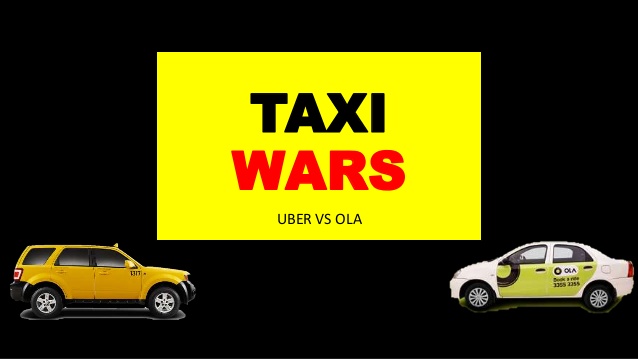Ola and Uber Failing in India. A downfall is seen with Ola and Uber’s partners ( Drivers ) moving out of the cab aggregators platform.

The age of access being offered by taxi-hailing apps like Uber and Ola is the biggest potential threat to the auto industry.
Anand Mahindra
Ola and Uber a sharp decline in sales
Cab aggregators Ola and Uber are witnessing a sharp decline in the growth of rides over the last few years. Ride-hailing services of Ola became popular among consumers in metropolitan cities of India in 2010, followed by Uber in 2013. Both of them started to share services from 2015 mainly to cater to office commuters.
According to the reports ride growth rates of both reduced to 4.5 per cent by June 2019. The daily growth ride was 90 per cent in 2016, which declined to 57 per cent in 2017 and 20 per cent in 2018. It can be due to the increased dismissal of drivers registering in these apps as they get less payment or incentives.
Why is this happening?
Major reasons behind the flop of Ola and Uber in India
- Drivers receiving underpayments
According to a top government official, Bengaluru has seen a 25-30% drop in the supply of active drivers. Even though the ride prices charged by the company increased at least 15 to 20% during non-peak hours across the cities, drivers get underpaid. It affects driver-partners monthly income, which leads to a continuous drop of drivers working with them.
- Costumers need to wait for more
For consumers, it gets reflected in far longer wait times, which diminished from an average 2-4 minutes to 12-15 minutes within two years.
- No incentives
These app-based taxi aggregator companies promise their drivers to give high monetary stimulus, which meant earnings of up to ₹1 lakh per month. But instead, incentives were drastically cut by around 40%, and the commissions the “Driver-partner” need to pay to the company increased steeply.
Our ambition is to build a globally competitive and futuristic transportation system in India that will support and accelerate a nation on the move.
Bhavish Aggarwal, an Indian entrepreneur and co-founder of Ola Cabs
Cab aggregators are on the path of growth
Even though it is tough to see the growth coming to stagnation soon, the distressed cab drivers and increased charges are a cause of concern. These go along with the widening focus of players towards vertical expansion.
Both Ola and Uber are concentrating on other businesses to grow. For example, Ola investing a lot of time and resources towards its Electric Mission, towards food delivery through Foodpanda and spending millions in Vogo, a scooter rental platform. At the same time, the company is belligerently growing its international operations.
According to an Ola spokesperson:
“While our core mobility categories continue to grow, we have further strengthened our offerings with deeper penetration of first and last miles categories like Ola Autos and Ola Bikes which are now present in over a 100 cities across the country. We are also on track to achieving Mission Electric — our commitments to put a million electric vehicles on the road by 2021 that will help drive sustainable mobility, for India and the world,”
Ola, Uber’s ride growth slows to a crawl

On the other hand, Uber also has acknowledged its move towards being a platform of services beyond cab-hailing, including betting big on Freight, Uber Postpaid, Uber Health platform and Uber Eats.
“Our rides business continues to show encouraging growth across India and South Asia. We believe that the future of transport is shared, multi-modal and electric,”
said by an Uber spokesperson in a statement
Relative to the taxi industry, Uber is a sustaining innovation; that is, it makes customers’ lives better. Uber targeted mainstream markets with a better service for existing customers, and it succeeded in serving them better than the incumbents.
Clayton M. Christensen
What do investors say?
Investors pointed out that profitability across these new businesses will only come from cost discipline and high utilisation.
With Uber and Lyft IPOs and losses under market scrutiny, there is pressure on both Ola and Uber India to become more cautious on their cash burn and explore sustainable modes of business,” said an investor in a ride-hailing firm.
Bhavish Aggarwal and Ankit Bhati- founders of the ola, has separately raised more than Rs 400 crore from Matrix Partners, Tiger Global, and Ratan Tata for its Ola Electric business. While Uber’s CEO Dara Khosrowshahi has acknowledged slowing growth in Uber’s core ride-hailing business and said, this would account for less than 50% of Uber’s business transactions soon.
Thus they show the signs of becoming more open and transparent about its plans to grow in India along with other territories.
Placements consultancy services are witnessing the same attribution rates in the IT sector as well due to layoffs and cost-cutting measures.
Our focus is on the customers and improving their experience. We believe that if we do that well, competition, prices, and profits will all take care of themselves.
Bhavish Aggarwal, Indian entrepreneur and co-founder of Ola Cabs





